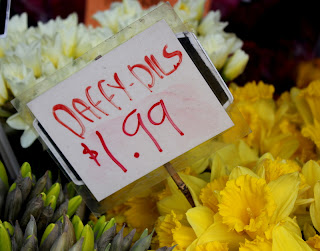If you’re at all familiar with home organizing websites (or
Pinterest) then you’ve probably come across the concept of “30 Days of
Organizing.” With my affection for lists and for clearing out and decluttering,
I’m always drawn to these lists and often start off making my own with a burst
of enthusiasm—enthusiasm that fades approximately five days into the whole
deal. You see, I’m always attracted to the fantasy idea of “getting things
under control” in a set time, like 30 days. Never mind that life itself resists
efforts to control it, and likely will never be under control. Never mind that my list often sounds about as fun
as 30 days of dental appointments. (How much interest can I really drum up in
cleaning the bedroom ceiling fan?)
So as I was making my latest dreary home organizing list, I pondered
taking the 30 days concept in a much more enjoyable direction. What about
scheduling 30 days of creativity? Or 30 days of sketching, writing, gratitude,
or even pampering? Oh, oh, oh—or 30 days of chocolate! Gee, those sound a lot
more fun! Frankly, I have more need of scheduling creativity and fun that I do
chores. Despite my sensitive conscience and obsession with contributing to
family life, I do enough. Instead of
adding more to my workload, I’m going to schedule in some fun.
As I was thinking about this idea, I also remembered
something I’d read on Matt Cutts’ blog—a slightly different take on the 30 days
concept. Matt is a software
engineer and head of Google’s Webspam team and he chooses a new 30-day
challenge every month. Some of his challenges have been 30 days of: exercise;
acts of kindness; avoiding reading, watching or hearing the news; drawing
something; and ukulele! Here’s a link to a video of Matt giving a short TED
talk about 30-day challenges:
I decided to go for 30 Days of Creativity, and here are a
few things I’ve jotted down on my list (any suggestions?): go on an artist’s
date; finish filling my sketchbook that only has two or three blank pages left
in it; write a haiku; take some photos. At this point, I’m not going to limit
myself to any one area of creativity, but I am going to try hard to make it 30
consecutive days. That will be a big challenge for me, because I often find it hard
to do anything for 30 consecutive
days, even fun things. I usually miss a day here and there, but I won’t beat
myself up about that. Any step in a more creative direction will be progress.
To keep me honest, I’ll let you know when I officially start my experiment, and
post updates about it here on the blog.
In my opinion, we don’t need to add more work to our lives.
We need to add more joy, more play, more fun and creativity. There will always
be more than enough work to fill our time—but is that really how we want to fill it?
What would you like to try for 30 days?








.jpg)




